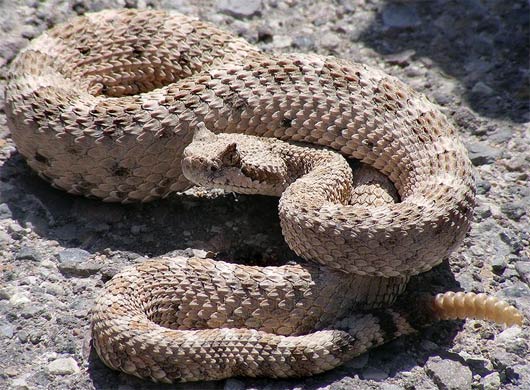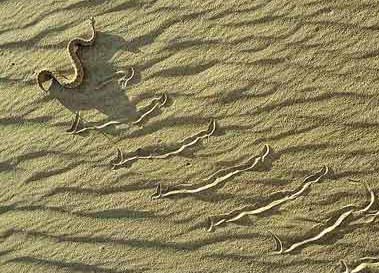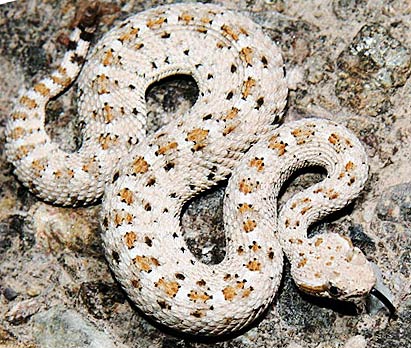Sidewinder Rattlesnake – Traveling in Style

The Sidewinder Rattlesnake is found in North American deserts and is named after the way in which it moves from place to place. Sidewinders move in a sideways motion. This is achieved by launching the middle of their long body to one side, then the head and tail follow that direction.
They are also known as “horned” rattlesnakes as the scales above their eyes rise up resembling horns. These scales help protect their eyes from sand. Their eyes have vertical irises like cats.

The unique motion it makes when traveling, leaves a very recognizable trail. The Desert Horned Viper, found in Africa, moves in the same sideways direction. The snakes even look similar, but they are not directly related. It is their environment that has forced them to adapt and optimize their movements, camouflage and hunting techniques.
Regional Subspecies
There are a couple of subspecies of Sidewinder Rattlesnake, living in different desert regions: the Colorado Desert Sidewinder, found in Riverside county in California, Sonora in the northern parts and in Baja California, Mexico.

Colorado Desert Sidewinder
The Sonaran Desert Sidewinder is found in various parts of the Arizona Desert, and in Sonora, Mexico.
The Mojave Desert Sidewinder’s range is in southern California, parts of Arizona and in Washington County, in Utah.
Hunting Methods
Sidewinder Rattlesnakes prey on rodents that live in the desert, such as kangaroo rats, as well as on certain lizards and sometimes on birds.
They make good use of their camouflage to hunt. They can blend in to the sandy desert environment and simply wait patiently for a small animal to pass by. Once in range, the Sidewinder will will attack by lunging forward and injecting the prey with venom.
The Sidewinder will normally wait until the prey is dead, before consuming it. The snake is not a very large snake, ranging in size from 18 to 32 inches (45cm to 80cm), and thus relies on its venom for hunting and defense, and on its distinctive rattle tail to intimidate foes.
Sidewinder Venom
Like other Rattlesnakes, Sidewinder venom has mytoxins that affects the blood and tissue of the victim. Due to the small size of the snake, its venom is not very potent. It also feeds mainly on smaller animals and lives in remote areas of the desert, where there aren’t many natural threats; these factors contribute to the relative weakness of its venom.
As a result of its remote habitat, its avoidance of larger animals and the low potency of its venom, not many bites are reported annually.
